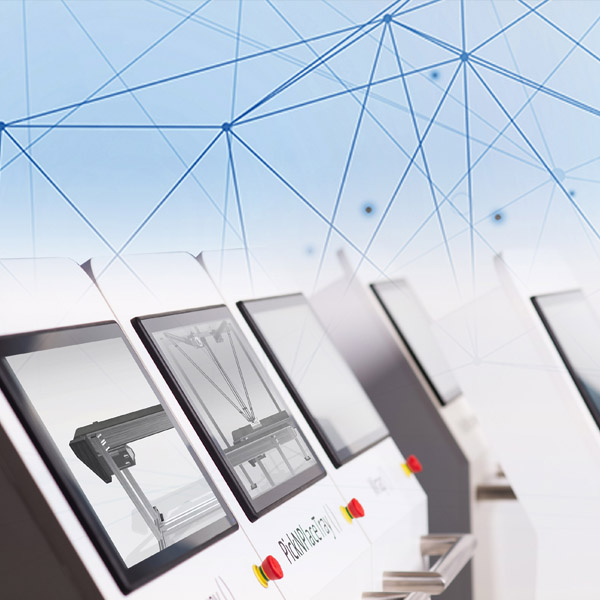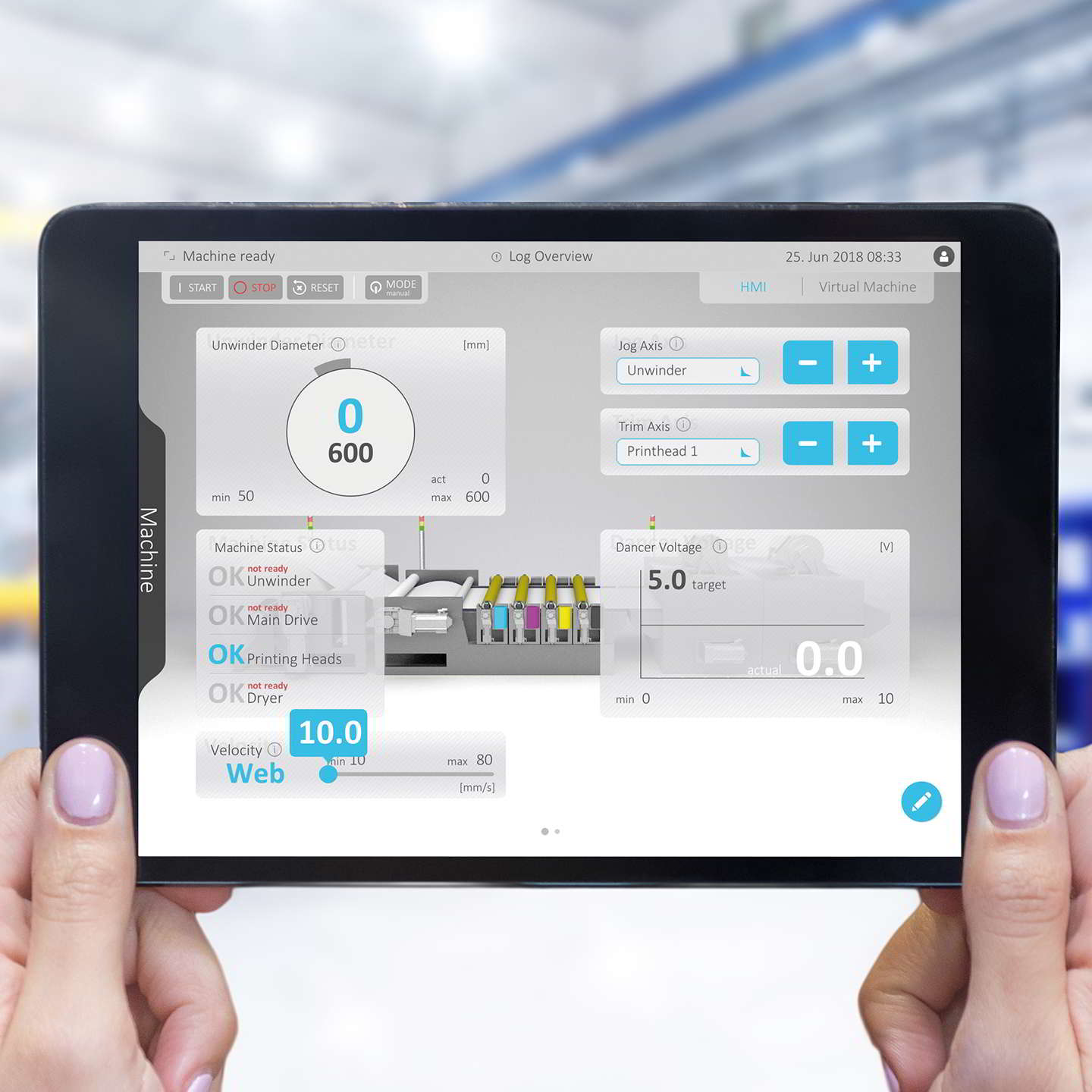At a glance
#1 The digital challenge
#2 Functional Safety
#3 The software dilemma in mechanical engineering
#4 Cloud computing in mechanical engineering
#5 The Digital Twin
#6 Industry 4.0 speaks OPC UA
#7 Business Models for Industry 4.0
#8 Cross-machine communication
#9 Plug & Produce for the Smart Factory
#10 Cyber Security
Cyber Security
Lenze Knowledge #10
Hackers are increasingly targeting machines and systems and causing production downtimes. Consequently, security is gaining importance in automation and becoming more of a focus for machine builders and operators of production facilities - out of self-interest and with a view to legal requirements.
As automation experts, we provide the best possible protection for our hardware, software and digital services. However, machines and plants can only be comprehensively protected against cyber risks if all parties involved - i.e., automation specialists, machine builders, and operators - take the necessary measures.
This white paper provides machine builders and operators with orientation in the jungle of standards and regulations concerning cybersecurity for machines: It offers an overview of the legal framework like the Cyber Resilience Act, requirements according to standard 62443, and implementation options in practice.
Self-managing production lines are here! In the flexible production of the future, machine modules will not only be coupled automatically, they will coordinate themselves as part of a production line, communicate and interact in the production process. With the Plug & Produce concept, Lenze presents the path into this future. Plug & Produce is an open, flexible and manufacturer-independent communication and integration concept for machines and production lines, based on the OPC UA communication standard using the “administration shell” for machine description as well as their capabilities ("skills"). The white paper describes the concept of Plug & Produce, what is already possible today and which steps are necessary for successful implementation.
The whitepaper OMAC PackML provides an insight into the topic of cross-machine communication based on standardized information models (PackML). It explains what lies behind the term PackML and how the standard is structured, but above all it focuses on the benefit argumentation from the user's point of view. Real examples from Procter & Gamble, Velux and Arla Foods show the advantages of using PackML from the end user's point of view. The examples of Mettler Toledo and the ProMach Group illustrate how machine manufacturers also benefit from the use of PackML. The mentioned references and testimonials can be used in daily sales work.
As digitalization progresses, new doors are constantly opening to customers, processes and data that were previously closed, or at least could not be used economically until now. Who doesn't dream of the disruptive business model with which the market is conquered and which leaves the competition left behind astonished.
But it's not that simple. A good portion of luck is needed to get there. In addition, success is based on a combination of a fundamental understanding of the success factors of innovation, organizational skills and hard, small-scale work, which places learning progress in the foreground and not the achievement of target figures. This whitepaper establishes the relation between these topics and brings the hyped topic "new business models" back to the ground of mechanical engineering reality.
There is no industry 4.0 topic without communication, all assets –devices, modules and machines– are communicating in all directions. And again and again you hear OPC UA.
But what is behind it? Where does it come from? And what is it good for?
The whitepaper answers all these questions and also explains why OPC UA is more than just another fieldbus system.
Mechanical engineering is subject to constant time and cost constraints. Meeting deadlines, ensuring compliance with agreed-upon specifications, and making last-minute software adjustments during commissioning with the customer breathing down one's neck. When problems occur, it is often the case that multiple attempts are required before the prototype fully complies with customer requirements. But when this happens, the cost estimate goes out of the window. Digital engineering provides a way out of this dilemma.
Today, a wide variety of highly specialized software tools are already in use to develop, simulate, distribute or manage machines. However, many of the available solutions are still isolated solutions and in many places a continuous digital process chain is missing. The whitepaper accompanies a robot through the complete product life cycle and uses various examples to explain the vision behind the digital twin and the benefits it promises in the very different phases.
Digitalization is changing mechanical engineering drastically. The complexity of machines as well as the degree of individualization are increasing and new services and business models are developing. Therefore the software effort is increasing exponentially. This calls for new ways and means to make programming more effective.
However, additional specialist know-how alone is not the answer. In order to benefit from modern design methods, the organization of processes has to change. The Whitepaper explains in a hands on way which aspects of the status quo pose problems and shows how mechanical engineering can develop further. It focusses on the fast adaptation of machines to the requirements of customers, on how to make the design process more efficient by using agile methods as well as on the question of how to assure consistent quality in software development.
Machine safety regulations determine that the OEM must guarantee the safety of a person, machine and the environment throughout the entire life cycle (and all operating modes). If the management does not follow suit, it is liable for the consequences - possibly even with private assets.
There are many duties to be exercised which are determined by numerous laws and guidelines. The Whitepaper provides an overview of the legal requirements, gives tips on the implementation and consequences of non-compliance. The paper also deals with the interaction of safety and security. While the two topics used to be often seen as opposites, Safety and Security have now become close "sisters" which both need to be considered and executed conjointly. The paper also looks at opportunities that arise from Functional Safety. Three concrete examples show how security pays off directly. For those who want to look into the matter more deeply the paper provides a list of interesting literature, which -along with norms and guidelines- include particularly important interpretation papers.
Our first Whitepaper pragmatically describes the steps you must take to master digitalisation. It also takes account of the fact that the transition from traditional product management to innovation management also requires adjustments in the corporate structure and the corporate culture. The white paper also includes basic technical information, it clarifies the way the different issues are connected, gives tips on overcoming obstacles, and makes suggestions for further reading.
The Whitepaper is primarily addressed to company directors and those responsible for management.



![[Translate to english (master):] Lenze Knowledge #8 Cross-machine_communication [Translate to english (master):] Lenze Knowledge #8 Cross-machine_communication](/fileadmin/lenze/images/solutions/1440x1440/whitepaper_8_Cross-machine_communication_1440x1440.jpg)





![[Translate to english (master):] Lenze Knowledge #2: Funktionale Sicherheit [Translate to english (master):] Lenze Knowledge #2: Funktionale Sicherheit](/fileadmin/lenze/images/solutions/1440x1440/Whitepaper_Functional_Safety_ThinkstockPhotos-841383812_opt_1440x1440.jpg)
![[Translate to english (master):] Lenze Knowledge #1 The digital challenge [Translate to english (master):] Lenze Knowledge #1 The digital challenge](/fileadmin/lenze/images/solutions/1440x1440/Whitepaper_tile_260x348.jpg)